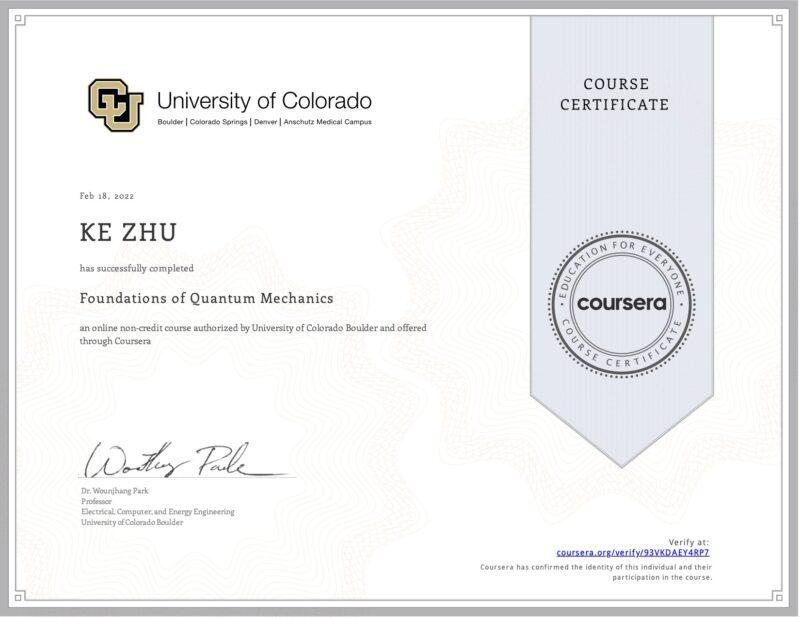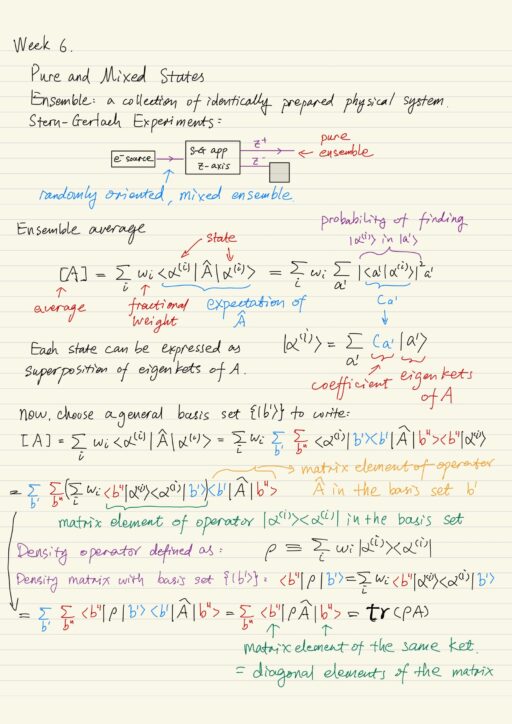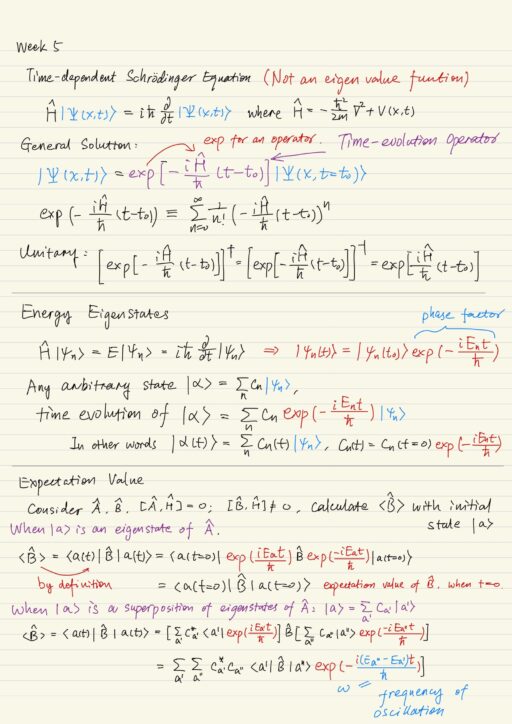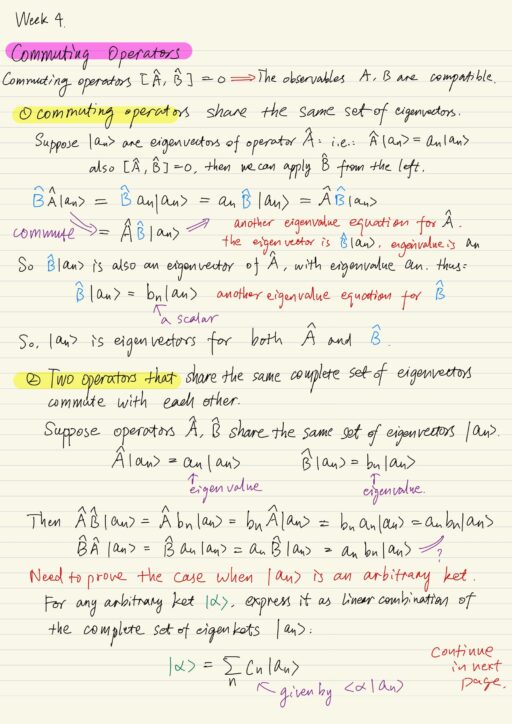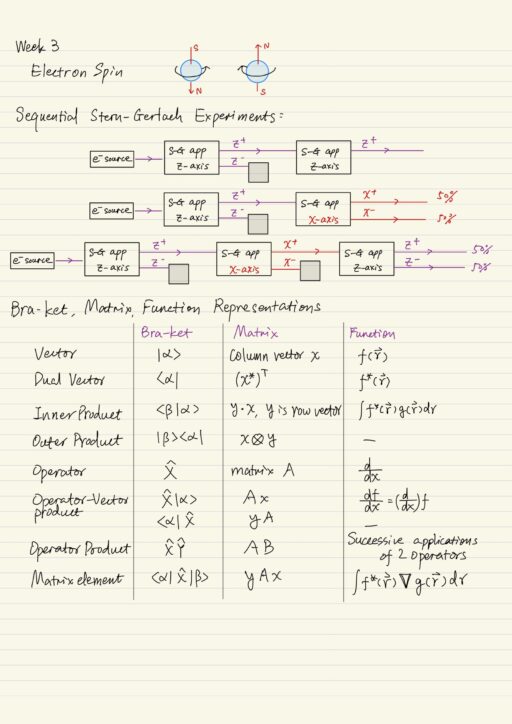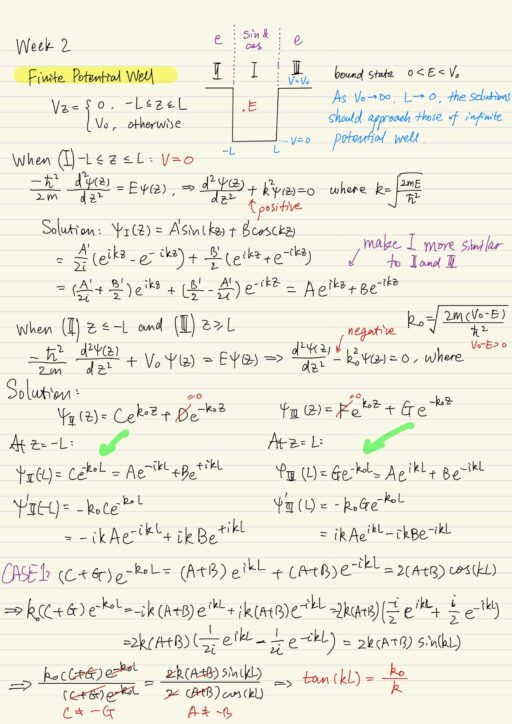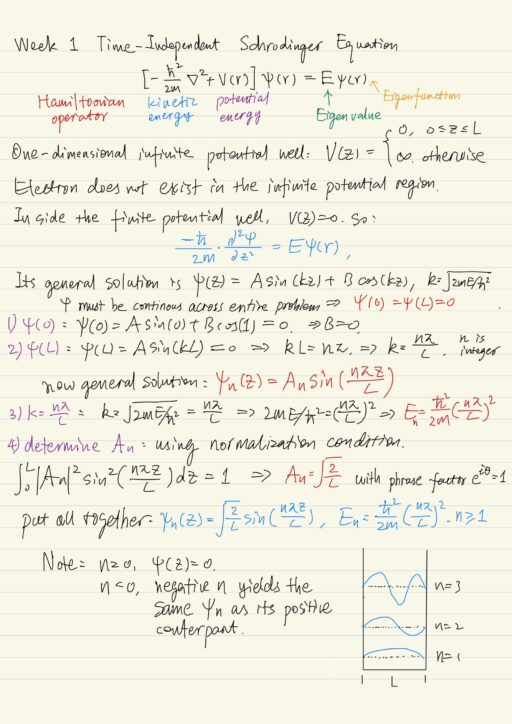Foundations of Quantum MechanicsUniversity of Colorado Boulder This is a challenging course. If you are serious about learning quantum mechanics, I highly recommend this course to you. Furthermore if you want to engage yourself with quantum computing, this course is an excellent choice to lay the foundations. Your quest starts here: the time-independent Schrödinger equation…
Tag: Wounjhang Park
Quantum Mechanics: Ensembles and Identical Particles
Pure and Mixed Ensemble / State In quantum mechanics, we only talk about average or expectation value for a physically observable quantity by taking multiple measurements on ensemble and taking average. Ensemble means a collection of identically prepared physical system. The Stern-Gerlach experiment is an example of producing an ensemble – a collection of electrons…
Time Evolution of Quantum States
Time-dependent Schrödinger Equation Time-dependent Schrödinger equations is not an eigenvalue equation, but allowing us to predict the state at t, given the initial condition at t0. where Hamiltonian H^ = -h2/2m ∇2 + V(x, t). The potential energy V(x, t) in general depends on time, however time-independent potential V(x) covers a large number of important…
Quantum Mechanics: Uncertainty Principle and Change of Basis
Commuting Operators Two observables A and B are considered ‘compatible’ if the corresponding operators commute with each other, i.e.: [A^, B^] = 0, where [ ] is commutator bracket, and A^, B^ are operators representing the physical observables A and B. Commuting operators have two very important properties: Commuting operators share the same set of…
Stern-Gerlach Experiments & Dirac Bra-ket Notation
Electron Spin Electron has intrinsic angular momentum called spin that is not associated with its orbital motion. And just like orbital angular momentum, spin angular momentum produces magnetic moment. Therefore electrons interact with magnetic field through both orbital and spin angular momentum. The electron is not actually spinning, electron produces angular momentum as if it…
Quantum Mechanics: 1-Dimensional Finite Potential Problems
Finite Potential Well Finite potential well problem is more realistic compared to the infinite potential well. It is specified by this potential profile V(z). If the energy of the electron E is greater than the well depth V0, the electron can escape the potential well and then can free to move around. The case where…
Time-Independent Schrödinger Equation
Wave-particle Duality The double-slit experiments show us: particle source P1 : probability pattern when slit 1 is openP2 : probability pattern when slit 2 is openP12 = P1 + P2 : probability when both slits are open wave source (intensity of wave I is defined by its amplitude a)I1 = |a1|2 : when slit 1…
